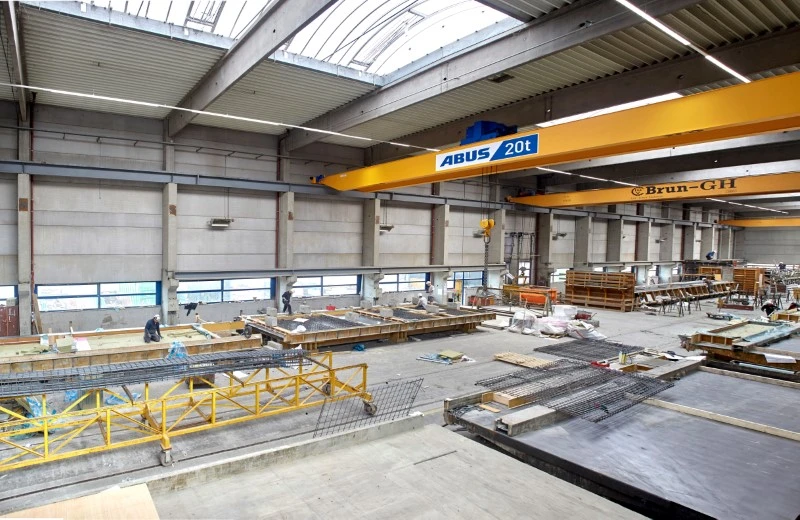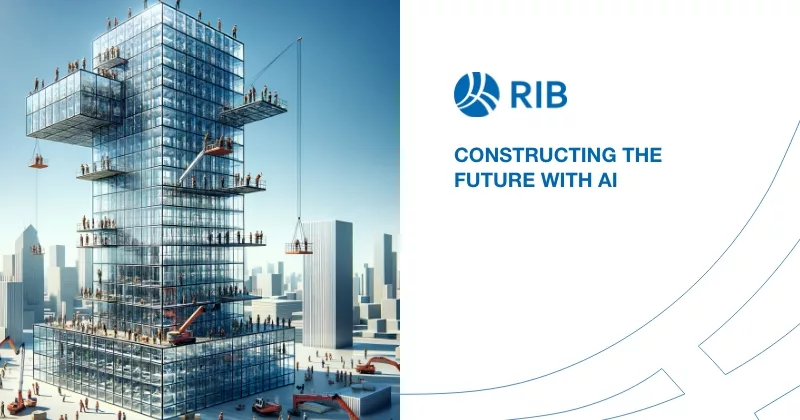6 mins read
Peter Gross Hochbau’s Precast Plant goes Fully Digital with RIB One Prefab and RIB 4.0
6 mins read

Peter Gross Bau, headquartered in St. Ingbert in Saarland, Germany, has been a trusted name in the construction industry for over 140 years. Active across all areas of structural and civil engineering—and beyond—the fourth-generation family business employs over 3,000 people. The company is deeply rooted in southwestern Germany but also delivers projects across the country.

Precast concrete components are a cornerstone of this business. Since the 1960s, Peter Gross Bau has offered an extensive range of precast products. According to the company, more than 40,000 tons of concrete are transported annually to internal and external construction sites. These elements are produced by experienced engineers and skilled workers and include load-bearing structures, wall components, architectural concrete, and custom specialty parts.
Digitalization as the foundation for cost-effective production
“We’ve been aiming for consistency in our precast production for years. So when it came to IT, we wanted a fully integrated system that would allow us to document and trace every product detail at any time,” says Marius Klein, Head of Digitalization and Production Manager at the precast facility.
Klein’s vision was to start tracking data from employee timekeeping and end with a clear view of the value generated by each individual precast component.
“That level of integration is possible with RIB Software,” he explains.
Klein brought fresh thinking from the automotive world and kick-started a major IT shift at Peter Gross Bau—moving away from manual processes toward a system where data is entered once and used everywhere. His goal was a high-performing platform, with minimal upkeep, that can streamline operations from end to end.

“Goodbye data silos. Hello single source of truth.”
In November 2023, Klein and his team launched the implementation of RIB One Prefab MES at the plant. They started with a fully integrated Smart Station, equipped with laser projection systems (Smart Laser) at the first production table. Combined with the rollout of RIB One Prefab ERP and RIB 4.0, Peter Gross is on its way to a fully digital production workflow.
The existing legacy system—a “monolith,” as Klein describes it—doesn’t allow data sharing with other tools and will be gradually phased out. “We’re tearing down our data silos once and for all,” he states.
A strong start with RIB One Prefab MES
RIB One Prefab MES proved the ideal entry point. “It was a quick win,” says Klein. “The system’s control unit can run independently, and the product quality is easy to track.” Manual documentation has already been replaced by touchscreen interfaces at workstations and tablets used by employees.
The MES system supports a two-step quality control process:
- Placement of built-in components and formwork is continuously monitored and documented during production, ensuring precision and accuracy.
- Quality checks are available directly on Smart Stations alongside work orders. With the mobile app, employees can access these plans on the go and even attach photo documentation using their tablets.
Building momentum with Master Data and RIB 4.0
The next milestone is defining and migrating all master data to RIB One Prefab ERP—a process earmarked for completion by mid-year. Meanwhile, RIB 4.0 is being implemented to manage payroll, financial accounting, vendor data, and client administration—laying the groundwork for a unified single source of truth.
Peter Gross Bau’s digital strategy is well thought out and future-focused. A fully integrated BIM process is also in the works, which will replace the current 2D planning and power the company’s entire assembly planning process. This will also enhance the efficiency of laser usage in production.

Connecting specialized processes via APIs
“We want to cover about 80% of our processes using RIB One Prefab and RIB 4.0,” explains Klein.
The remaining 20%—specific to company workflows—will be connected via APIs. One example: a custom, simplified solution designed for warehouse operations. According to Klein, RIB’s software provides the ideal foundation for these tailored integrations.
One feature the team is especially excited about is the ability to assign labor hours to individual precast elements. This will enable them to allocate costs precisely and measure the profitability of each production step.
“That’s a game-changer,” remarks Klein.
BIM and carbon tracking are future priorities
As carbon tracking becomes a growing priority and sustainable cement alternatives gain traction, the team is also exploring RIB 4.0’s CO₂ calculator. With RIB solutions already in place, Peter Gross Bau is well-positioned to take these next steps.
“We’re curious to see where we’ll be in a few years,” Klein concludes. “But with RIB, we’ve already laid the groundwork.”
Most Recent
6 mins read
8 mins read
6 mins read
4 mins read
Case Study Categories

Ebook


